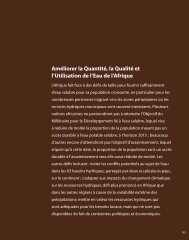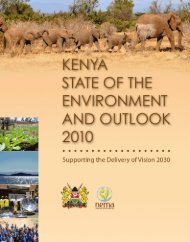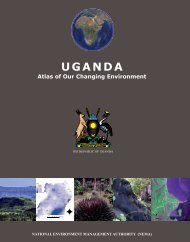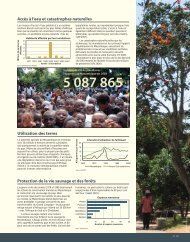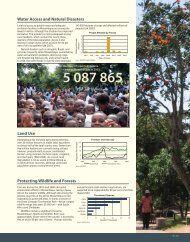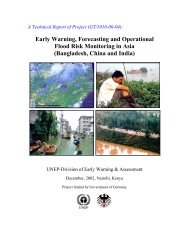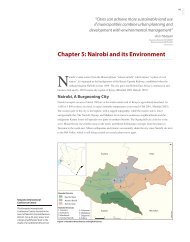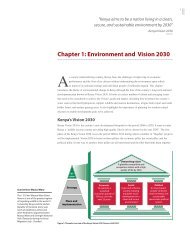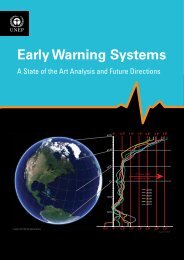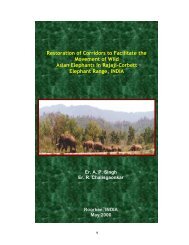To open this publication, click here... - UNEP/GRID-Sioux Falls
To open this publication, click here... - UNEP/GRID-Sioux Falls
To open this publication, click here... - UNEP/GRID-Sioux Falls
You also want an ePaper? Increase the reach of your titles
YUMPU automatically turns print PDFs into web optimized ePapers that Google loves.
Chapter 2: Environmental Changes of Selected Hotspots 31<br />
Kigali City’s sole solid waste facility, Nyanza Landfill in Kicukiro district, has reached capacity and is to be replaced by a new landfill in the near future.<br />
By 2009 it was being filled with soil to prepare it for decommissioning.<br />
The Nyanza landfill is partially rehabilitated by covering it with soil.<br />
Kigali is estimated to generate 500 tonnes of solid waste per day. Of <strong>this</strong>, only 100-150 tonnes are transported to the sole<br />
landfill (KCC 2011b) at Nyanza located 10 km from the city centre. Until recently the Nyanza site posed a huge challenge<br />
regarding health and environmental hazards emanating from unpleasant and noxious smells. These were exacerbated by<br />
sporadic fires as well as from leachate flow. The Nyanza landfill site has now reached full capacity and work towards its<br />
decommissioning has started. In <strong>this</strong> regard the City of Kigali took steps to compact the solid waste on site and cover it with<br />
soil while at the same time installing ventilating pipes to allow the decomposition gases to escape. This intervention has<br />
worked well in mitigating the health and environmental hazard and has stopped the fires outbreaks.<br />
A new landfill site has been identified on the southern outskirts of the city. Solid waste will be sorted to remove recyclable<br />
products to support the flourishing but largely informal recycling sector before disposal of the residual waste at the new<br />
landfill. T<strong>here</strong> is also potential to briquette municipal solid waste with the resultant cylindrical fuel blocks being used as<br />
a cooking fuel. Further, the methane gas extracted from the sanitary land fill can be used to generate electricity and earn<br />
carbon credits worth more than 9 000 CER (Carbon Emission Reduction units) each. The net monetary cost to the city would<br />
be close to US $1 million, although the cost to the environment in addition to emissions reduction would be incalculable.<br />
<strong>To</strong>shikazu Mito 2009<br />
The rehabilitation process involving compaction of the solid waste and<br />
covering it with soil after completion in 2011.<br />
<strong>To</strong>shikazu Mito 2009



